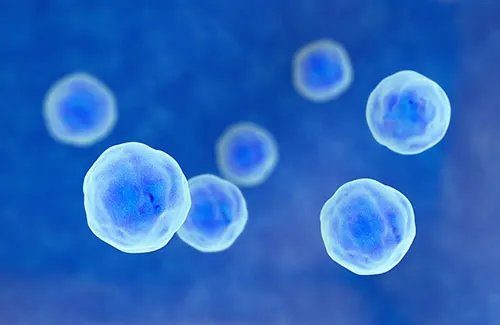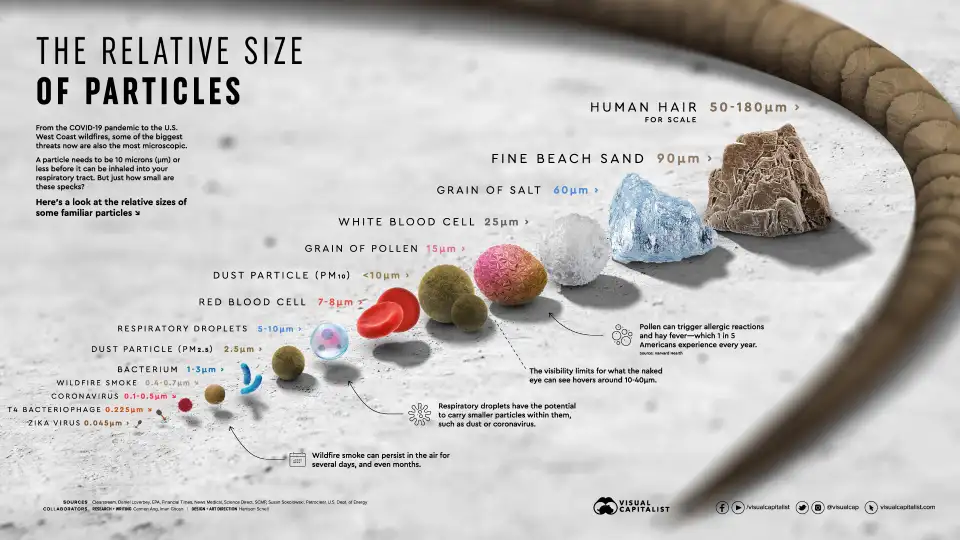What is Particle Size Analysis
- What is Particle Size Analysis
- Principle of Particle Size Analysis
- Methods of Particle Size Analysis
- Particle size determination by optical microscopy
- Particle size determination by sieving method
- Particle size determination by Sedimentation Method
- Particle Size Determination by Laser Diffraction Method
- Particle size determination by Coulter counters
- Particle Size Distribution by Sieve Analysis


Particle size analysis is a technological process that identifies the size of the particles in the sample. Either this is a powder sample or liquid sample; it shows the PS of the particles in which ratio in the sample particle team to be computed or utilized to characterize the particle size(PS) distribution in an offered sample.
Particle size analysis can be related to strong, emulsions, suspension, as well as aerosol. There are a number of methods used to gauge the PSe, some particle size method can be utilized for a broad range of the samples, but numerous can be made use of for details applications. Picking the most suitable method for various samples is really crucial because different methods can create various results for the very same product.
Principle of Particle Size Analysis
Particle size analysis is a technical procedure that figures out the particle size of the material, which is a solid or liquid sample. Particle size analysis is a considerable test and also is used for quality control in numerous sectors. Regarding each production was crushing or grinding is used. Particle size is a crucial factor in establishing the efficiency of manufacturing processes and performance of the final made items.
The variety can be determined by optical microscopy of PS in 0.2-100 microns. The size in this method is shared as the predicted size (DP) which describes the diameter of the location, comparable to the crooked particles observed under the microscope. This method offers number distribution which can be converted into a more weight circulation.
The optical microscope is to establish the particle size of the complying with type of samples.
PS analysis in suspension.
Globule size circulation in the solution.
PS analysis in aerosols.
PS Analysis by Optical Microscopy.
PS is approximated with the help of eyepiece micrometer.
About 500 particles were calculated to approximate the true mean .Normal cumulative frequency, such as the size frequency circulation curve has actually been plotted
Methods of Particle Size Analysis
The particles are small strong products and there remains in almost every material or matter, the size and also structure of particle are measured for various functions. Larger size particles are resolving much better, whereas smaller particle is less. Particle size mostly impacts the proprieties of the product such as their dissolution, solubility, as well as security etc
Particle size is an usual word and holds a broad selection of sizes important, there are a number of methods are used for PS identifying, just a some are basic, that is, do not require calibration through other methods, tiny method is one of these, However it is utilized as a normal method of dimension in numerous areas.
There are a number of methods made use of for the PS evaluate, besides laser diffraction. Sieving is the earliest method that still typically utilized for relatively huge particles size ie. > 1mm and also for measuring little size particles is. < 0.5 um, the Dynamic Light Scattering is the straightforward methods to make use of..
Below are states some methods for Particle size decision are as complies with.
1. Optical microscopy.
2. Sieving method.
3. Sedimentation method.
4. Coulter counter method.
5. LASER Diffraction method.
Particle size determination by optical microscopy


In this method a substance microscope is made use of, Inspect particles for their shapes and size straight with a microscope. The particle can be gauged utilizing this method from 0.2 μm to 100μm in size variety. The particle dimension is measured directly by appearing in the microscope or by the estimate for a much better sight..
Advantages and Disadvantages of Optical Microscopy in Particle Sizing
Here is point out some advantages as well as disadvantages of optical microscopy in PS analysis allowed's check it.
Advantages of Optical microscopy in Particle Sizing
It is the simplest method for particle size analysis.
The shape analysis is offered by Optical microscopy method.
It allows watching the particles.
Contamination and also cluster of the particles can be found.
Easy to count the particles.
An electron microscopic lense or scanning electron microscope can be made use of to measure very tiny particle size.
Disadvantages Optical microscopy in Particle Sizing
Optical microscopy takes a long test cycle.
It is not feasible to test the ultrafine particles by the microscopy method.
The depths of the particle are not easily accessible.
Examining of ultrafine particles not possible.
This is a tedious and slow method.
Particle size determination by sieving method
In this method Particles varying from 50 to 1500μm are gauged. It is a rough as well as rapid way and also can acquire weight circulation of particle size. Sieves of various pore sizes are utilized for screen the powder.
The sample of the expected amount is gone on the screen top and tapped. In doing so, large sized particles are retained by a specific sieve number. Hence the particles pass through the holes of screens on the basis of size as well as transfer to different levels. Tiny size particles are decided on the finest screen.
Advantages and Disadvantages of sieving method in Particle Sizing
Right here are some advantages as well as disadvantages of the sieving method in PS analysis, let's inspect it.
The advantages of the sieving method in Particle Sizing
The analysis includes rapid as well as very easy handling of the instrument.
The outcomes of particle sizing are precise and also reproducible.
It is a time-saving method.
The cost of the instrument is lower than other methods.
The disadvantages of the sieving method in Particle Sizing:
It functions just with dry particles.
The minimal restriction of measurement is 50μm.
There is a possibility of additional reduction in size, which can trigger mistakes.
Particle size determination by Sedimentation Method
If any kind of particle falls in fluid, it gradually settles down, the Bigger particle is resolved faster than the smaller sized particles, this principle is to work in PS decision. The particles of the same density, they are cleared up just on the basis of size so large particles settled promptly at the bottom of the debris than the smaller sized size particles.
Right here is mention some advantages and disadvantages of the sedimentation method in particle size analysis allowed's check it.
Advantages of the sedimentation method in Particle Sizing
It has an affordable for analysis.
Constant as entire of a sample is evaluated.
Constant operation without disruption.
Results are exact and also reproducible.
Relatively broad test range.
Disadvantages of the sedimentation method in Particle Sizing
Test cycle of sedimentation method is long.
Particle Size Determination by Laser Diffraction Method
LASER Diffraction is also referred to as edge diffraction. Refraction in the form of a light change angle in the trip with the particle. When the process of particle size is under process, without the requirement to quit the manufacturing process, the LASER can be determined by diffraction techniques. Due to its having broad array it is an extensively utilized method of particle sizing for materials that range from thousands of nanometers to several millimeters.
Below is mention some advantages and disadvantages of laser diffraction method in particle size analysis let's check it.
Advantages of Laser Diffraction method in Particle Sizing
The Method is consistent.
Time-saving method.
Straightforward procedure.
Wide examination range.
Outcomes are accurate and reproducible.
The completely dry test is available.
Disadvantages of Laser Diffraction method in Particle Sizing
Examination outcomes are reliance to circulation pattern.
Cost of the tool is high.
Particle size determination by Coulter counters
The PS as well as particles matter in coulter counter method depend on the assessable changes in electric insusceptibility generated by a nonconductive particle that put on hold in an electrolyte. In this method of particle size analysis, the particle is suspended in the conductive service such as electrolyte option.
Below is discuss some advantages and also disadvantages of the Coulter counter method in PS analysis allowed's check it.
Advantages of the Coulter counter method in Particle Sizing
The operation is really simple.
Short screening cycle.
Fairly high accuracy.
Many regular method since we obtain info of size the of each particle.
Disadvantages of the Coulter counter method in Particle Sizing
Size range is Narrower.
Apertures obtain Conveniently obstructed.
Electric conductivity of tool important.
Particle Size Distribution by Sieve Analysis
Sieving is an easy and also usually used method of categorizing powder as per to its physical size alone, Screen method includes a large PS range. The micro-mesh sieves set up the aperture size in coming down order. Different kinds of aperture arrays are accessible. Sieving implements by handbook or device motion, with either be dry or wet, the primary variables that affect the sieving outcomes included extremely great PS, particle form, time as well as method of agitation, first screen loading. Due to the constraints of the size near the bottom, sieving, there is not an ideal method to define the full particle size distribution of the powder, however, with other methods, it can act as a method of Pre-classification of powder. On the whole, sieving is ideal appropriate for examining the powder which contained a large size portion. i.e. 50 µm.
References
